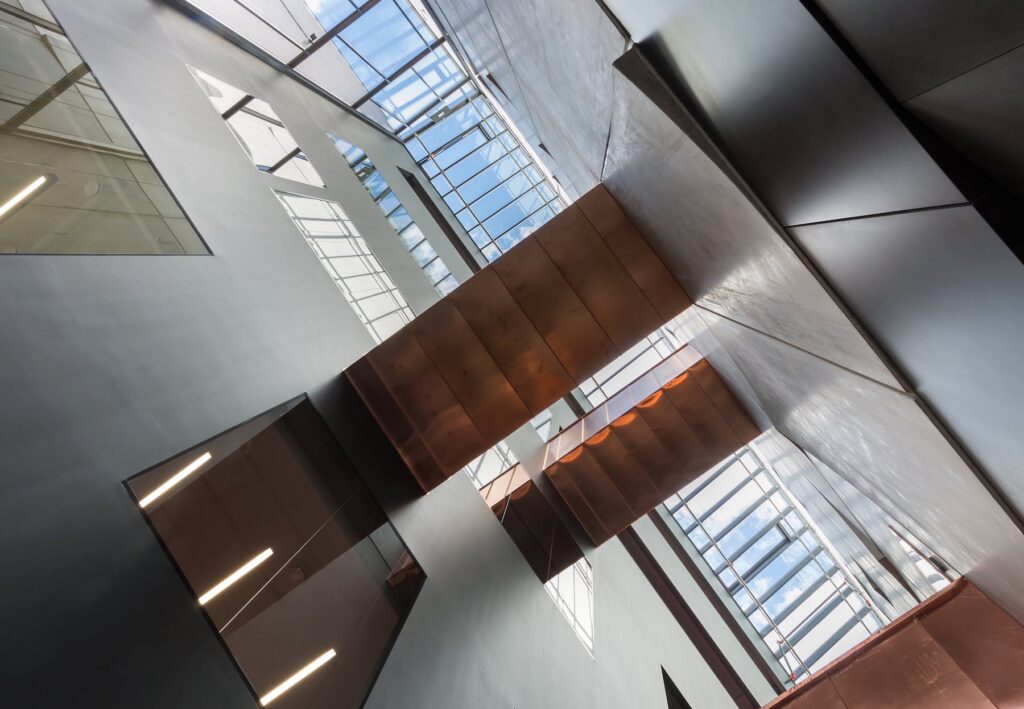The state as a client is nothing new for designers, especially in architecture. For an interior architect, the public sector customers could include local governments, ministries or state institutions. The interior architect is generally contracted by the architect and joins the process in the preliminary building design stage or even later—which, in turn, has constricted the interior architect’s creative contribution. However, in the past years we have seen the state’s increased interest in and expectations for interior design solutions as a conceptual whole.
In order to discuss what we have achieved and where to proceed, the chairman of the management board of the Estonian Association of Interior Architects Pille Lausmäe-Lõoke was joined by the State Real Estate (RKAS) architect and former vice-president of the Estonian Association of Architects Kalle Komissarov and the spatial design project manager Kristiina Vasar.
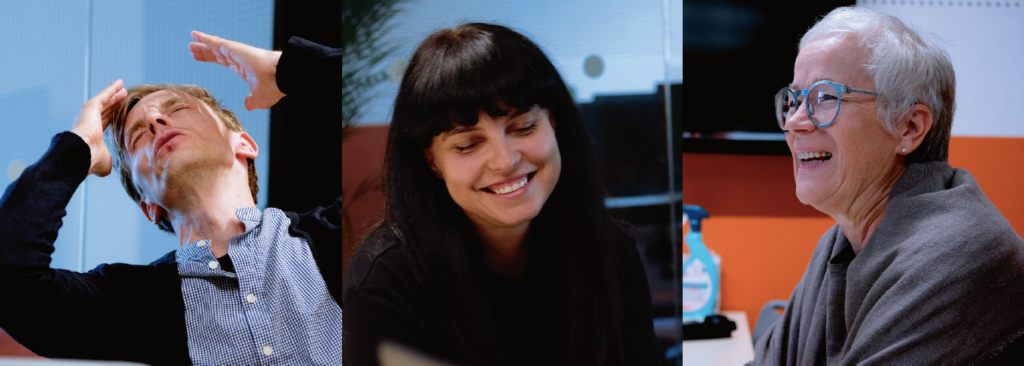
A dark horse and value-based procurements
Pille Lausmäe-Lõoke: Interestingly enough, there are relatively few interior architects in Estonia who have experience with state contracts, especially with projects led by RKAS. At the same time, our association includes more than 200 members and there are even more practising interior architects who are not our members. Most interior architects have no experience with state contracts or the skills to have a say in the matter—participating in public procurements or undertaking state contracts has in a way become a separate sector.
Kalle Komissarov: By state you probably mean the entire public sector, not only RKAS. I admit that we indeed lack such direct relations where the public sector contracts an interior architect. In the Estonian Association of Architects, there is a particular scheme how the public sector can commission an architect. It is a well-established model of organising open architecture competitions as public procurements. I sincerely believe that competitions allow to make calculated decisions and choose the best option. It is not actually important whether the competition is initiated by the public or private sector, the aim is always to find the best solution. I have recommended that landscape architects organise competitions also in their area of activity where the practice is completely different. There have also been interior architecture competitions, however, these have largely concerned exhibition and exposition designs.
Kristiina Vasar: Architects very often have their own circle of interior architects that they have good cooperation with and after winning a competition, they take offers for the interior architecture project from three offices.
PL: The other trend is that specific people are included in specific projects: interior architects with experience in designing schools in school projects, offices with experience in hospital design in hospital projects.
KK: The market should be opened up as much as possible so that also young people could have a go and it would be possible to find the talented dark horse, so to speak. In Europe, it is now quite common that offices specialise in specific typology, it is especially severe in the US. In our small country, such professional segregation would be limiting and it is not worth specialising in a highly narrow field. How often could you design an airport in Estonia? Once in a lifetime! In the Estonian Association of Architects, we have tried to avoid the requirement in procurements saying that participants must have prior experience in similar projects, as it would limit the number of participants and the prospect for a good result. In RKAS, we are trying to move towards value-based procurements, which is a form of procurement procedure that considers not only the price but also the professional qualification level, the number of awards, experience or participation in competitions.
In procurements based on the cost, I have come across offices that we have never heard of before. I suspect these are mere business plans with the main contractor outsourcing the work based on the price—in such cases, we cannot possibly expect high-quality results. My Christmas wish could be as follows: to boot out cost-based procurements and replace them with value-based ones.
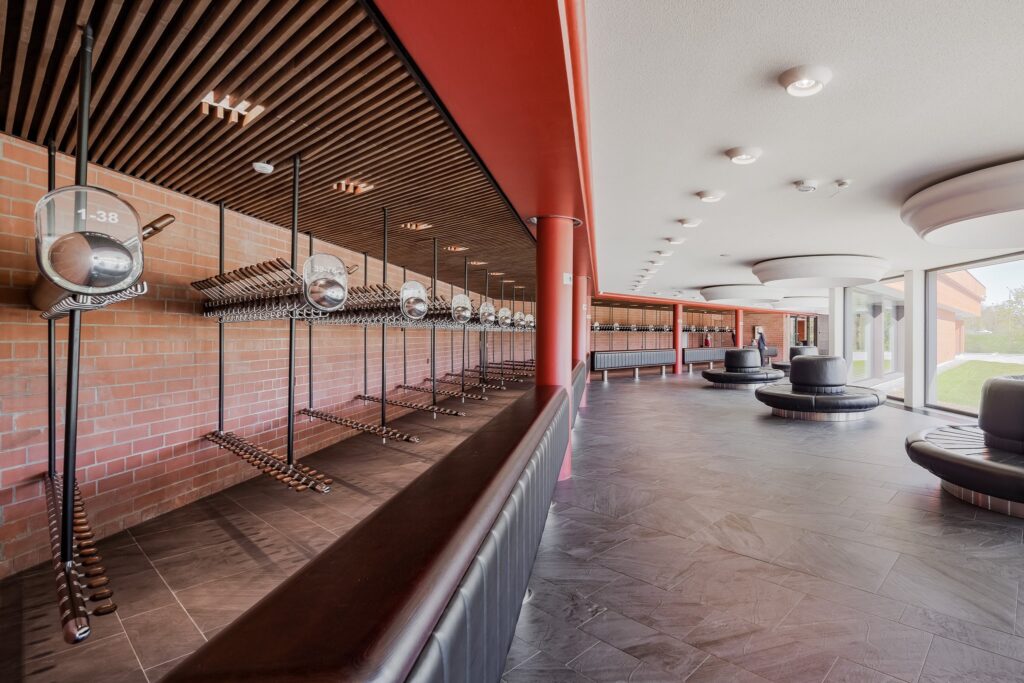
The interior architect as an eternal subcontractor?
KK: In terms of subcontracting, I have a cunning plan to promote architecture competitions among interior architects. First of all, interior architects should be included in the juries. For instance, in case of schools, we have put the jury together so that the five members include two architects and one interior architect.
PL: Probably the only precedent of an interior architect taking part in the work of an architecture competition jury was the one for Tallinn City Theatre in 2018 when you set the terms and conditions.
KK: The inclusion in juries would be followed by competitions for interior architects, as RKAS is planning to do in the competition for the lobby of Jõhvi Vocational Education Centre. The winner can be the principal designer, in other words, the interior architect will turn into the principal designer. This way, their only possible position in the design process is no longer that of a subcontractor. It will increase their self-awareness as well as the quality. It would allow to change the current pattern of the architect as the main contractor involving various participants, including the interior architect.
In the current situation, interior architects have no possibility to fully implement their knowledge, they are only responsible for technical issues. Once the interior architect is included at an earlier stage, the general quality of the space will improve. As also interior architects have copyrights on their work, competitions would enhance their decision rights.
PL: This is also a logical continuation of our restored signatory rights. Since 2018, interior architects have had the sole signatory rights to sign their projects as authors within their limit of competence.
The race of the lowest bid
PL: As an interior architect, I often see how we are included at a stage when the architect and the client have agreed on the terms and we are left with the option either to take it or leave it, this is the price. If the project is interesting, it is very difficult to decide. In more serious design projects including labour-intensive BIM solutions (Building Information Model), offices with no respective experience may have a very different understanding of the eventual cost of the work from those who already have this experience.
KK: On the other hand, the childhood illness of cheap procurements has reached its puberty as the system of the lowest bids recreates further similar bids. We know that the given problem is being tackled by the Estonian Association of Architectural and Consulting Engineering Companies (EKEL) who are preparing a guideline on how to play fair in the given situation. The Estonian Association of Architects (EAA) also wishes that participants submit a draft, however, as there can be hundreds of procurements in a year, we cannot expect architects or interior architects to work for free. According to the Public Procurement Act, it is not mandatory to select the lowest bidder! The act has been drawn up in good faith that it will reduce corruption, which it has, but nobody could predict the tremendous price pressure on the designers. If creative associations expressed their concerns, I believe the Ministry of Finance could come to their assistance. The problem of the lowest bidders does not only concern the design but also the construction. How to rule out inadequate bidders? Should it be based on background screening, blacklists or ethical violations, or through professional qualification committees? It would hardly be appropriate or even possible.
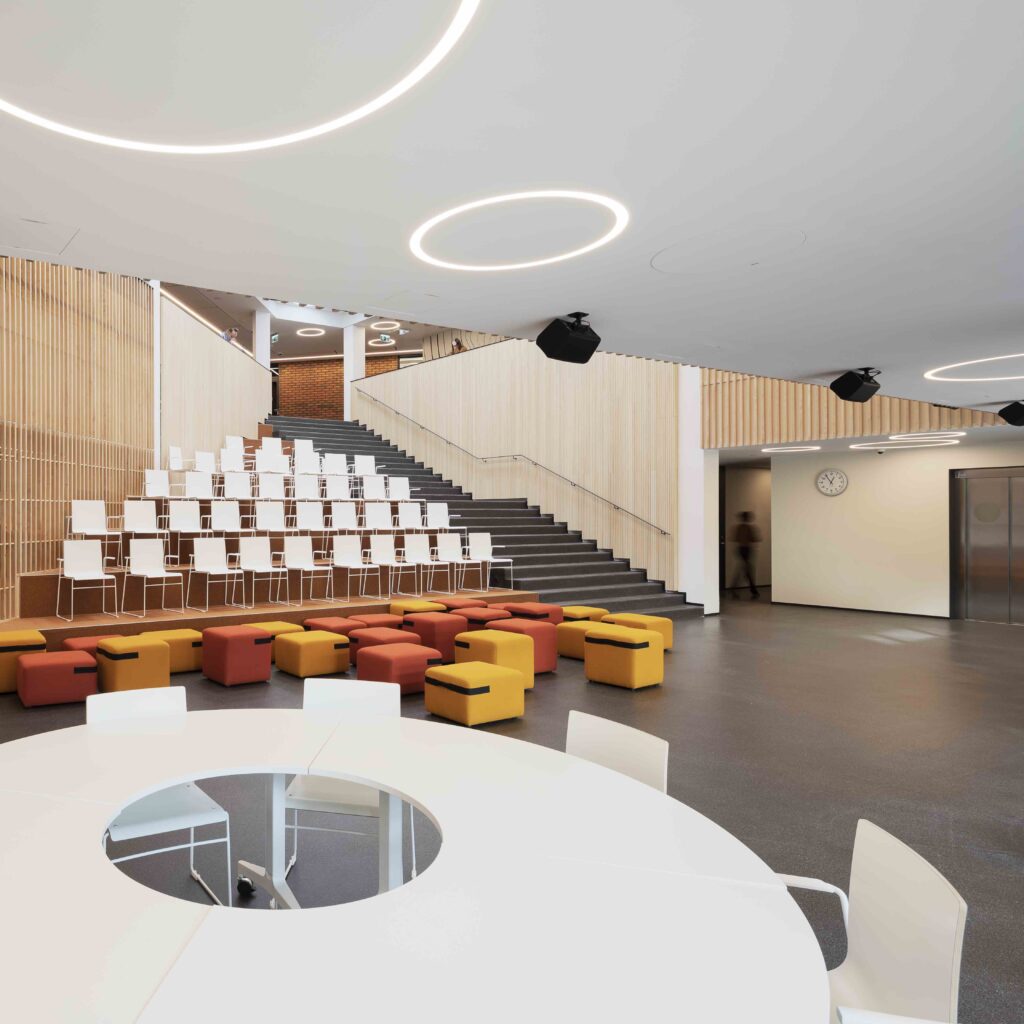
Standards and good practises—who shall decide?
PL: I have come across various understandings of what should constitute an interior architecture project—the scope of sketches, joints, HVAC. For instance, I’ve seen an interior architecture project of a three-storey office building on four A3 sheets as well as a project consisting of two thick folders. Yes, we have the national standard, but life has shown that it can be interpreted differently with the final result largely dependent on the professionalism of the interior architect. Would it be possible to draw out a sample project in cooperation with RKAS featuring the components of a proper project as well as the level of detail in the principal and operational building design documentation? It would allow us to avoid situations where we are forced within fixed cost restrictions and need to compromise on the quality due to budgetary constraints.
KK: It is not possible to set a common quality standard, also laws have been drawn up primarily to rule out violations. Unfortunately, it is not possible to establish good practises, we can only demand the minimum level.
KV: We want every project to be a good project. I understand that interior architects with no prior experience with public buildings would need some kind of guidelines, but I cannot imagine how it could be implemented.
PL: I have come across an interesting phenomenon—a public procurement of building design in which the construction company selects the architects. It is highly convenient for the construction company as they can dictate the selection of interior design materials as well as the layout. However, in case of such design procedures, the client must be aware of the scheme and know exactly what they will get. Otherwise, only the builder will benefit, not the user.
The spatial competence of local governments
KK: The problem with local governments is the lack of specialists with spatial competence. For a long time, there have been thoughts about establishing a central system with a spatial competence expert group or a specialist, such as the state architect under a particular ministry who is informed of such issues. In case of a lean government, it is difficult to establish such an autonomous independent unit and so there is a lot of scepticism. It is also important that the state is an informed and competent client. I am convinced that in this respect RKAS could set an example. There is a great team and detailed standards and guidelines, for instance, regarding BIM or furnishing—this already ensures high quality. At the same time, we are constantly supplementing and updating RKAS guidelines in accordance with the changes in the construction sector.
PL: We have received feedback from our colleagues in the association that the situation is pretty terrible on the local government level. For instance, the problems with procurements do not stem from malice but unawareness. Very often a completely inexperienced person is assigned to lead the project.
KK: The job description of a local government specialist with spatial competence does not require architectural qualification. In case we add also professional qualification requirements, for instance, Chartered Architect Level 7, we would never find anyone to work there! From now on, RKAS has been appointed by the government to act as the voluntary key contracting authority for the entire public sector, in other words, in case the local government wants help with the preparation of design or construction procurements, they can turn to RKAS with the request to carry it out.
PL: We have been in a situation where the contracting authority of the public sector does not understand the basics of a design project or the responsibility born by the client, in other words, the principle that each new stage is based on the decisions made in the previous stage. They cannot possibly assume that the client can endlessly introduce new changes and alter fundamental things even in the stage of operational building design. There are no competent terms of reference, which of course is an issue in itself… In this sense, also RKAS might have room for improvement. We would expect RKAS to support us and also instruct the respective sector. We have discussed the option of drawing up a guiding questionnaire for clients to help them to set the basics for the design.
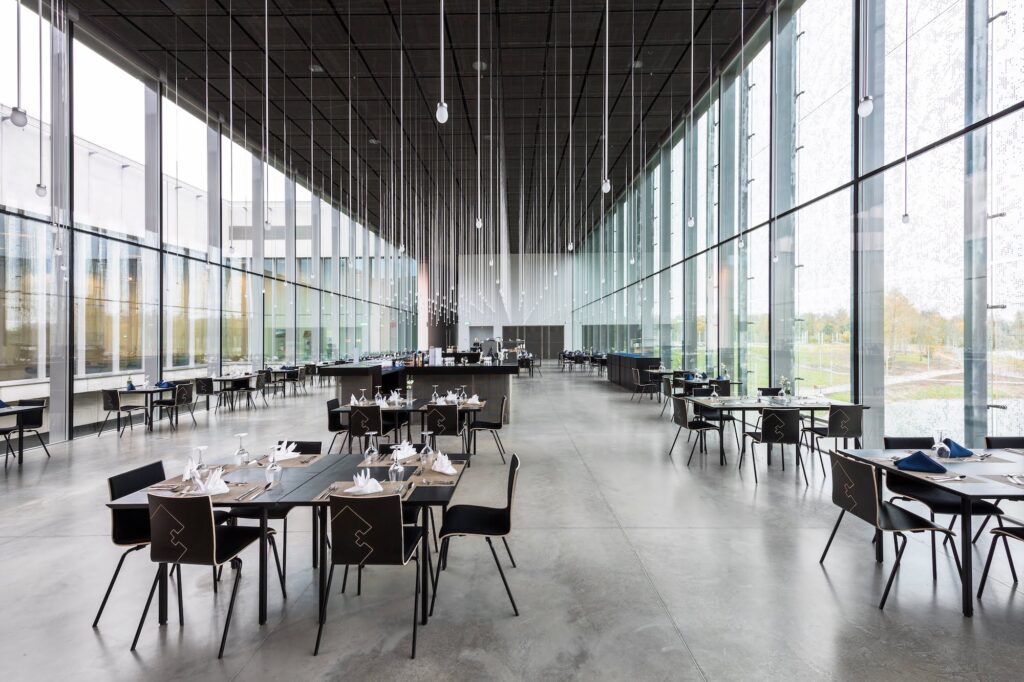
KK: How to improve the competence of public sector clients? Good practises should be appealing, and in this respect, professional associations should definitely cooperate, for instance, by promoting positive and innovative projects and achievements through awards or yearbooks so that the information would also reach the public sector: trainings, exhibitions, presentations. For example, the state secondary schools and the basic school renovation programme by Innove were soon followed by a wave of new school projects.
PL: At the time, the wave of state secondary schools also had a considerable impact on people’s attitude to space and public spaces.
KK: The surge of new schools has not ended yet and once they are all completed, it should satisfy all parties. State secondary schools will definitely improve the school environment quality and, in this sense, it is definitely a highly remarkable programme. By the way, interior architects are always included in these projects quite at the beginning.
PL: Awareness has increased and we have moved on from the understanding that the interior architect’s task is to choose the finishing materials. Now they are expected to provide the key concept and layout solutions, not to mention BIM modelling.
KK: Yes, BIM certainly marks a transitional stage. On the ministry level, it is attempted to establish a long-term view in construction—it means that all resources are harnessed in the name of efficiency. This can provide considerable results in construction: costs can be cut in CO2 emissions, energy efficiency, building and maintenance. It can be done in a way that the building’s entire life cycle, that is, the long-term perspective is foreseeable and traceable. Now it has been decided that BIM is one of the possible tools. The transition has been highly difficult, just like the transition to new materials in 1990s. Not everybody could accept it. And BIM will not save the world either—after all, we do not want to have a perfect model but a perfect house!
PL: In the near future, we should also establish a working group of designers who have experience with it and consider the problematic issues that they have come across regarding the BIM requirements. Many problems actually occur due to the fact that the design stages and organisation in Estonia differ from those in other countries where BIM has been generally accepted and taken into use.
KV: Indeed, at the moment RKAS is still waiting for a highly detailed model. I personally prefer a 2D drawing to a large-scale model in which some things can easily go unnoticed.
PL: Does this purely technical work deserve a competent interior architect’s time and effort? Or should we perhaps wait until a new profession emerges—a BIM architect dealing with the technical issues within the model? This is the case in countries where BIM has been used for a long time. It will certainly increase the office’s workload, payroll costs and improved equipment.
Project as a comprehensive whole and copyrights
PL: We have also argued about the replacement of some parts of the project with so-to-speak equivalent products.
KK: Does it mean then that replacements can be made in the principal building design stage but not in the operational building design documentation?
KV: No, replacements can be made until the very end. However, we can rule it out by stating that there can be no analogies used in case of a particular object as it will violate the original concept.
PL: The concept is the key issue. The object is a comprehensive whole.
KV: It has been my goal to make sure that the product would visually and functionally correspond to the interior architect’s wishes. In my experience, in recent years relatively few products have been replaced in our projects. All wishes have been granted with no need for highly detailed product descriptions.
PL: Nonetheless, our experience with replacements over the years has caused considerable frustration. I am sometimes embarrassed to find myself saying to younger colleagues: don’t bother, your choices will be replaced anyway.
KV: Which objects are typically replaced?
PL: Chairs and light fixtures.
KV: Yes, light fixtures definitely, as these are included in the construction company’s procurement.
PL: After one of the EAIA discussions on public procurements of furniture, we talked about the situation and the way out also in our association. We reached the conclusion that the Public Procurement Act and copyrights contradict one another.
KK: Yes, that’s right.
PL: Last year, the board of the association had to turn to the Chancellor of Justice with regard to the issue of copyrights causing confusion in public procurements—thanks to this we now have the certainty that the creative work of interior architects cannot be changed and replacements in procurements do not comply with the law. We’ll see how this knowledge will be manifested in practise.

The contractual position of power
KV: It seems to me that interior architects are afraid of RKAS but I don’t understand why. I don’t think that we restrict your creative work. EAA seems to have a more positive attitude to us, but so far I have had different experience with interior architects.
PL: One of the reasons is the furniture procurement and product substitutions mentioned earlier. The other reason for our fearfulness is definitely the contracts. The problem lies in their one-sided position of power that leaves the interior architect in a rather helpless situation. In the lawyers’ opinion we should not agree to such terms under any circumstances, but usually we are subcontracted and thus faced with the simple option: take it or leave it.
KK: EAA once collected feedback from its members: what are their recommendations regarding contracts, what should be improved etc. They also analysed public procurements and the collected list was taken to RKAS. They were naturally ignored immediately, but that was four years ago. Currently we have reached a level of cooperation where we have strongly stressed the issues related with standard contracts and, for instance, the copyright problem has been altered in a way that is accepted also by EAA. RKAS has no interest in twisting anyone’s arm. I presume that the association is a strong partner for the public sector and wants to show that it still represents professionals of the sector.
PL: The feedback by interior architects on public procurements also included the payment terms. As they are subcontracted, they are entirely dependent on the agreement between the main contractor and the client. For this reason, the time between the interim payments can be rather tense and gruelling for small offices, which interior architect offices, for the most part, tend to be. It is impossible to put pressure on the main contractor as they rely on their contract. Therefore, it seems much more reasonable and convenient to have an agreement directly with RKAS.
KK: During the emergency situation, EAA together with representatives of the design sector made recommendations to the government on how to alleviate their situation during an economic crisis. One of the points was making the interim deadlines more frequent and, as far as I know, RKAS implemented it in case of some projects. I think this is a matter of mutual negotiations but at the same time also an issue of wider awareness and self-esteem. If you are contacted by a large principal designer company and you are at the end of the food chain, your voice will not be heard. The goal is to make them contact you at the very beginning so that you could set your own terms and conditions.
PL: Yes, the association should definitely explain their members that it is possible to negotiate, establish their own rights and not be cornered. It is important to have the sense of security that the interior architect is backed by state as the client.
KK: This brings us back to the topic that we need to organise competitions for interior architecture thus allowing interior architects to become the main contractors. That would be a new beginning. You need to make yourselves important. Architects should ask themselves each morning: why do I exist? And similarly also the association should ask each morning: why do I exist?

PILLE LAUSMÄE-LÕOKE is an interior architect and the chairman of the board of the Estonian Association of Interior Architects.
HEADER: Noora, 2017. Architecture: Arhitekt11. Interior architecture: Vaikla Stuudio. Photo: Kaido Haagen
PUBLISHED: Maja 101-102 (summer-autumn 2020) Interior Design

